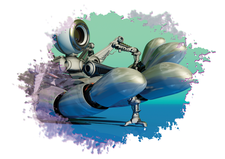Webcam streaming with Guvcview and QtCAM
Action!

If your new webcam doesn't work with the default software on your Linux system, try your luck with Guvcview or QtCAM.
Many webcam manufacturers still don't take Linux seriously, which means that kernel modules for many cameras are often created by freelance developers. In some cases, the manufacturer even changes the chipset during a production run without informing the Linux community. The result of all this uncertainty is that webcam operations in Linux are somewhat unpredictable. A specific system might work out-of-the-box for some cameras but have troubles with others. Users today, however, are accustomed to more seamless hardware configuration. If you, or anyone who depends on you for Linux advice, is having trouble with getting a webcam to work in Linux, one option is to replace the on-board webcam utility shipped with your distro with an alternative application. Guvcview and QtCAM are powerful alternative tools that are suitable for all desktops and support a wide range of cameras.
Tech Talk
On Linux systems, the UVC driver, or the GSPCA driver for older models, can talk to most webcams. The UVC module even supports cameras connected via USB, and it supports webcams built into laptops. A list of compatible webcams can be found on the UVC project's website [1].
The GSPCA driver is used for cameras that do not yet use the UVC driver but can be addressed via a special bridge chipset. A list of supported cameras can be found on the LinuxTV project website [2].
[...]
Buy this article as PDF
(incl. VAT)
Buy Linux Magazine
Subscribe to our Linux Newsletters
Find Linux and Open Source Jobs
Subscribe to our ADMIN Newsletters
Support Our Work
Linux Magazine content is made possible with support from readers like you. Please consider contributing when you’ve found an article to be beneficial.

News
-
Two New Distros Adopt Enlightenment
MX Moksha and AV Linux 25 join ranks with Bodhi Linux and embrace the Enlightenment desktop.
-
Solus Linux 4.8 Removes Python 2
Solus Linux 4.8 has been released with the latest Linux kernel, updated desktops, and a key removal.
-
Zorin OS 18 Hits over a Million Downloads
If you doubt Linux isn't gaining popularity, you only have to look at Zorin OS's download numbers.
-
TUXEDO Computers Scraps Snapdragon X1E-Based Laptop
Due to issues with a Snapdragon CPU, TUXEDO Computers has cancelled its plans to release a laptop based on this elite hardware.
-
Debian Unleashes Debian Libre Live
Debian Libre Live keeps your machine free of proprietary software.
-
Valve Announces Pending Release of Steam Machine
Shout it to the heavens: Steam Machine, powered by Linux, is set to arrive in 2026.
-
Happy Birthday, ADMIN Magazine!
ADMIN is celebrating its 15th anniversary with issue #90.
-
Another Linux Malware Discovered
Russian hackers use Hyper-V to hide malware within Linux virtual machines.
-
TUXEDO Computers Announces a New InfinityBook
TUXEDO Computers is at it again with a new InfinityBook that will meet your professional and gaming needs.
-
SUSE Dives into the Agentic AI Pool
SUSE becomes the first open source company to adopt agentic AI with SUSE Enterprise Linux 16.

